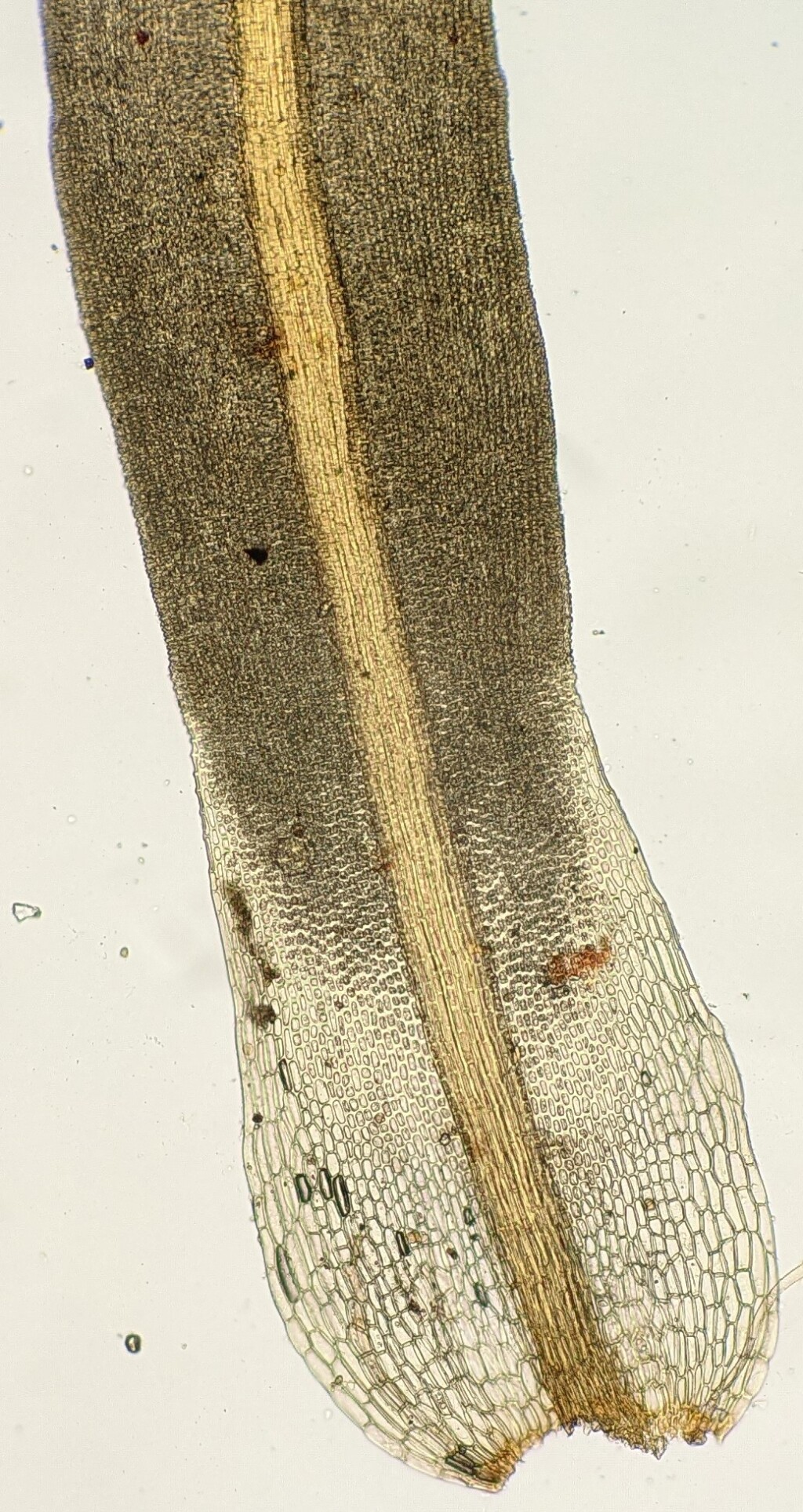Tortella
Dioicous (not in Victoria) or autoicous. Asexual reproduction by caducous leaf tips near stem apices (not in Victoria). Tufts, turves or cushions on soil, rocks or logs. Stems simple or sparingly to frequently branched, with sparse or dense rhizoids at base or occasionally tomentose; central stand present or absent (not in Victoria); hyalodermis present; sclerodermis present, usually weak. Leaves ligulate to linear-lanceolate, erect-spreading to squarrose when moist, incurved or contorted and often twisted around stem when dry; apex obtuse, acute, or acuminate, sometimes apiculate; costa subpercurrent (not in Victoria), percurrent (not in Victoria) or short-excurrent, with quadrate to elongate adaxial superficial cells, with a differentiated adaxial epidermis, with an adaxial stereid band, without a hydroid strand, with an abaxial stereid band, with or without a differentiated abaxial epidermis, with elongate abaxial superficial cells; margin entire or rarely denticulate (not in Victoria), plane, incurved toward apex, sometimes undulate or rarely recurved to revolute near base (not in Victoria), rarely with a border of more elongate cells in apical half (not in Victoria) or hyaline rhomboid or wider rectangular cells near base (not in Victoria); laminal laminal cells in apical half hexagonal, subquadrate or quadrate, pluripapillose with C-shaped papillae, unistratose or occasionally bistratose (not in Victoria), with yellow, yellowish-orange or reddish brown KOH reaction; basal laminal cells differentiated in a V-shape, extending furthest up margin, rectangular, hyaline, smooth. Acrocarpous or cladocarpous (not in Victoria). Capsule erect, straight or slightly curved, ellipsoid to cylindric, exserted, operculate or rarely cleistocarpous (not in Victoria), with or without (not in Victoria) an annulus. Calyptra cucullate, smooth. Operculum conic or rostrate. Peristome of 32 straight or twisted filaments or rarely absent (not in Victoria).
Cosmopolitan, with around 56 species; two species in Victoria.
The description of Tortella presented here includes the non-Victorian genus Pleurochaete, which appears to be derived from a Tortella ancestor in phylogenies of DNA sequences (Werner et al. 2005; Grundmann et al. 2006). Chionoloma, Oxystegus and Pseudosymblepharis also form a closely related group and it has been suggested that these genera may also be best combined with Tortella, pending further study of the group (Werner et al. 2005). Under this circumscription Tortella would be generally defined by plane leaf margins, inflated basal laminal cells that extend furthest up the margins forming a V-shaped region of cells and a V-shaped transverse section of the adaxial stereid band (Zander 1993; Werner et al. 2005). However, currently these genera are generally either treated as distinct (e.g. Zander & Eckel 2019) or combined in Chionoloma (e.g. Alonso et al. 2016).
 Spinning
SpinningAlonso, M.; Jiménez, J.A.; Nylinder, S.; Hedenäs, L.; Cano, M.J. (2016). Disentangling generic limits in Chionoloma, Oxystegus, Pachyneuropsis and Pseudosymblepharis (Bryophyta: Pottiaceae): An inquiry into their phylogenetic relationships. *Taxon * 65: 3–18.
Grundmann, M.; Schneider, H.; Russell, S.J.; Vogel, J.C. (2006). Phylogenetic relationships of the moss genus Pleurochaete Linb. (Bryales: Pottiaceae) based on chloroplast and nuclear genomic markers. Organisms, Diversity & Evolution 6: 33–45.
Werner, O.; Ros, R.M.; Grundmann, M. (2005). Molecular phylogeny of Trichostomoideae (Pottiaceae, Bryophyta) based on nrITS sequence data. Taxon 54: 361–368.
Zander, R.H. (1993). Genera of the Pottiaceae: Mosses of harsh environments. Bulletin of the Buffalo Society of Natural Sciences 32: 1–378.
Zander, R.H.; Eckel, P.M. (2019). Pseudosymblepharis and Oxystegus species (Pottiaceae) new to northwestern North America, and refutation of molecular Chionoloma. The Bryologist 122: 568–577.

